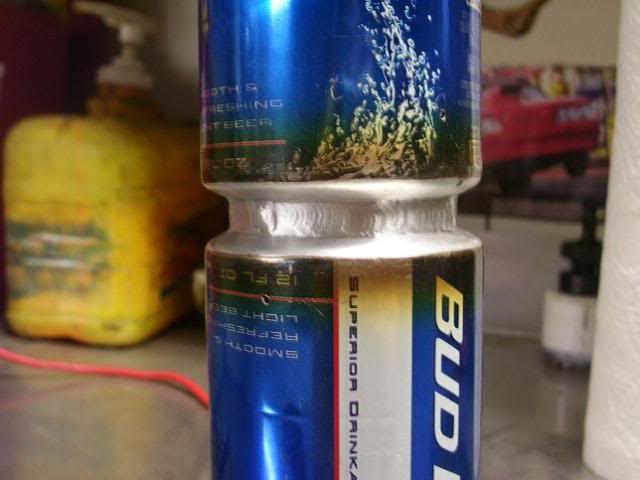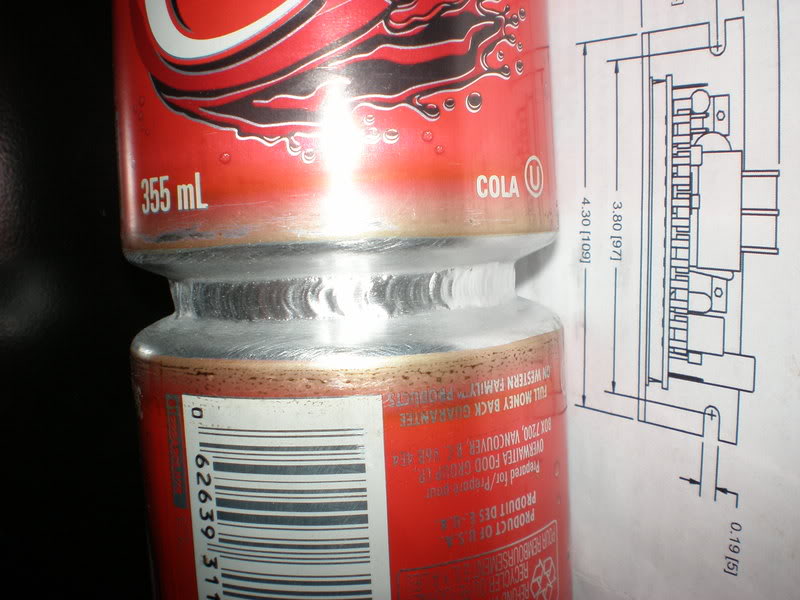 "WELDCOME TO THE WORLD'S GREATEST WELDING & WELDING RELATED FORUM of the AMERICAN WELDING SOCIETY"
"WELDCOME TO THE WORLD'S GREATEST WELDING & WELDING RELATED FORUM of the AMERICAN WELDING SOCIETY"

tiger2!
If you're welding with a conventional power source, DO NOT USE PURE (GREEN) TUNGSTEN!!!! Use Zirconiated instead of "the green goblin." Use a Zirconiated tungsten instead...
Zirconiated (ZrO2-0.15% to 0.40% Brown)Is excellent for AC welding due to favorable retention of balled end, high resistance to contamination, and good arc starting... Preferred when tungsten contamination of weld is intolerable...
If you're welding with an inverter type power source you CAN use a 2% thoriated tungsten ground down to a pointed electrode with the head of the needle point ground flat or "Truncated" if you only have a choice between red or green and don't have the extra funds to use rare earth's instead... The leading experts would prefer a 2% Ceriated, 1.5 percent lanthanated or 1 percent lanthanated... That's because ceriated and lanthanated hold up better for AC applications than 2 percent thoriated, and are radiation free, unlike thoriated... The most common electrode used in DC applications remains thoriated... However, because of concerns about radiation, most experts strongly recommend ceriated and lanthanated electrodes for both AC and DC welding because of their superior performance and the fact that they are radiation free... Tests have demonstrated that the ceriated and lanthanated electrodes are equal to thoriated electrodes in terms of their welding properties and even surpass them in some respects.... Both the ceriated and lanthanated electrodes are DC- and AC-weldable and can be used universally for almost every welding task And here's why:
http://www.thefabricator.com/article/aluminumwelding/choosing-tungsten-electrode-type-size-for-aluminum-gtawHere's another good one also:
http://www.lincolnelectric.com/en-us/support/welding-solutions/pages/aluminum-faqs-detail.aspxhttp://www.lincolnelectric.com/en-us/support/welding-how-to/Pages/aluminum-category.aspxhttp://www.millerwelds.com/resources/articles/TIG-GTAW-Tungsten-Selection/As far as your weld photo is concerned, it requires me to ask you some questions prior to giving my own opinion... So the first one will be:
1.) Are you using pure Argon? And if you are, then what is your gas flow rate set at on your gas regulator? And 2.) What is your electrode to work distance? 3.) What is your approximate torch to work travel and work angle? When you're feeding the filler metal to form the weld bead, are you keeping the filler metal within the gas plume around the torch's gas cup, and not contaminating the tungsten electrode as you feed in the filler and, are you dipping the end of the filler metal @ the leading edge of the "puddle" or are you just steady feeding the filler @ the same leading edge of the weld pool (puddle)?
Side Note* I hope you know that the machine (Lincoln Precision 225) you're welding with has a less than 40% duty cycle @ 125 amps and only a 10% duty cycle @ maximum output amperage/current. Also. the design is of the conventional power sources of the past being a transformer rectifier type as opposed to an inverter type power source...
When one is working and welding Aluminium, remember that in preparation for welding the Aluminium base/parent metal must be cleaned, the tools being used must be dedicated for use on Aluminium only, and mild steel tools can contaminate the aluminium surface so stainless steel tools are recommended... Cleanliness is the key word when welding Aluminium so wear gloves that cannot transfer any organic or inorganic residue on to the surface or on the filler metal... Use the proper grinding discs designed and dedicated for Aluminium only and stainless steel wire wheels only... The Three C's... Clean, Clean, Clean!!!


Finally, once you established the puddle, start stacking them (the dime shaped puddles - hence the non-standard term of laying your bead to look as if you 're seeing a stack of dimes laid out flat on the joint) as you move but, don't stay in one spot for too long to overheat the metal
so run with it!
This 1st link is probably the best out all of the links I will post in this response with respect to showing you 10 different problems associated with Aluminium TIG welding, or better known as GTAW (Gas Tungsten Arc Welding) and the photo's will surely help you narrow down the possible cause of your Aluminium welding problems...
http://www.millerwelds.com/resources/articles/common-TIG-GTAW-welding-problems-visual-guide-graphic/Here's a good troubleshooting chart:
http://www.millerwelds.com/resources/tech_tips/TIG_tips/troubleshooting.htmlHere are some other links covering Aluminium TIG welding:
http://www.lincolnelectric.com/en-us/support/welding-how-to/Pages/aluminum-category.aspxhttp://www.lincolnelectric.com/en-us/support/welding-how-to/Pages/tig-welding-aluminum-detail.aspxhttp://www.weldingtipsandtricks.com/aluminum-welding-training.htmlhttp://www.thefabricator.com/article/aluminumwelding/welding-aluminum-pipinghttp://shopmetaltech.com/welding/identifying-and-solving-tungsten-electrode-and-arc-issues.htmlHere's another good link or two:
http://www.alcotec.com/us/en/education/knowledge/http://www.alcotec.com/us/en/education/knowledge/techknowledge/Here's the aluminium welding question and answer link:
http://www.alcotec.com/us/en/education/knowledge/qa/index.cfmAnd finally, this one is a generalized TIG welding link that can be helpful in other applications also:
http://www.gowelding.org/TIG_Welding.htmlOnce you got your technique down, post some more photo's to show us your progress and then we'll give you an honest critique to improve your welds even more if they require any... And if you're ready, try welding those Aluminium cans together like Lawrence recommended and post your results afterwards okay?
Go for it!





There's probably something I probably left out so if I did, I'm sure someone else will chime in and add more suggestions... Practice, practice, practice, and when you get tired take a short break but then go back and practice some more! Good luck and once again,
"WELDCOME!" Respectfully,
Henry



 tiger2!
tiger2!
































 "
" So now we know!
So now we know!

